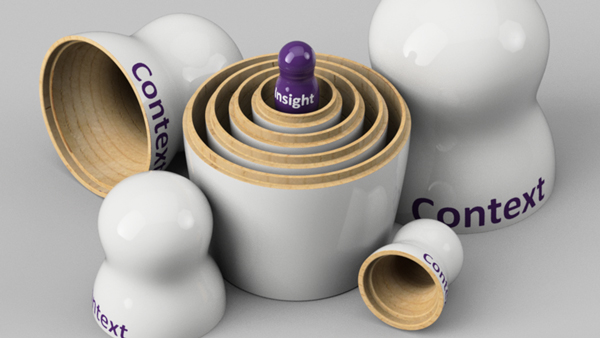Architect Eliel Saarinen once stated: “Always design a thing by considering it in its next larger context – a chair in a room, a room in a house, a house in an environment, an environment in a city plan.” This is wonderful advice for designers, and an important principle to keep in mind for those working with designers. Countless times I have been pulled to a co-worker’s workstation to sign off on a detail tweak we’ve discussed, only to find the detail in question filling the entire screen. Nice blended surface, I guess – but how does it visually balance with the scoop surrounding the button that would be about 12″ to the right of your screen at this scale?
This is why designers often don’t give the quick “yes/no” answers others expect of them. They need to take a step back, squint, and get a sense of a detail from multiple angles and within the larger context. Over time, I’ve found that this principle doesn’t just apply to the proportional relationships on a product.
In our design research we aim to uncover latent needs of the user, and build a deeper framework of empathy for their decisions and motivations. Context bears heavily on those aspects, and much of our research employs in-field ethnography to observe and interact with users directly within those environments and scenarios. As tangible as it is, the physical context can be easy to overlook. Lighting, noise, and access can all be significant in influencing the appropriateness of a design.
But context can also shift due to other factors, including urgency, infrastructure, distraction, and so on. It is important to comprehend how the full environment of your product morphs and shifts throughout its interaction with the user. The context of a medical device may very well be defined by the infrastructure of selecting, delivering, and paying for that physical item you are designing as much as the ergonomics of the handle or the sterility of the work surface. They may not be as direct as a sharp edge against the side of your finger, but many times they can still be an influence (and be influenced).
Never forget to take a step back and assess the context – it is usually where the most meaningful insights you will discover lie.

